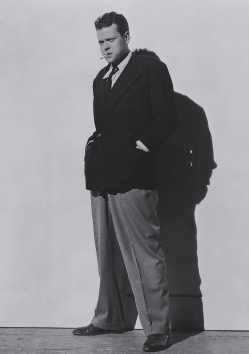Movies and Film: How to Recognize a Great Director
How to Recognize a Great Director
Great is pretty vague and subjective. That's why greatest lists generally say much more about the people who make them up than about the list items themselves. Still, and for what it's worth, here are some criteria for judging greatness in filmmaking. The one criterion we are leaving out is box-office receipts. You can get those on The People's Choice Awards or Entertainment Tonight. By this criterion, Porky's (1981) was a better film in its first week than Citizen Kane (1941). The following criteria are not exhaustive; you may think of more on your own. And we don't want this list to seem like a series of merit badges on the way to Eagle Scout. But a really terrific director should have accomplished one or more of the following:
- Made a contribution to the technology, aesthetic, politics, or industry of filmmaking.
- Had a social impact.
- Had an impact on her/his contemporaries.
- Had a continuing influence on later filmmakers.
- Achieved lasting recognition.
Several of these criteria overlap; it's hard to imagine how one could have a social impact without achieving some kind of recognition. Still, the following paragraphs are meant to more carefully define and distinguish between these criteria.
Technical, Aesthetic, and Political Innovation
Perhaps most important, any artist worthy of recognition should have done something meriting recognition. That innovation may be technical: George Mlis coinvented the genre of fantasy film by inventing trick photography. Or it may be aesthetic: D. W. Griffith did not invent the close-up, but he gave it emotional impact. Sergei Eisenstein is a great filmmaker because he consciously wedded an ideology (Marxism) with a particular film technique (editing) to create a new kind of filmic continuity: montage.
Social Impact
Second Take
Sometimes a strong influence may not be completely terrific. The resurrection of the blockbuster American film in the 1970s of the Star Wars variety is sometimes seen as having helped discourage the production serious smaller films in favor of big-budget entertainment.
For many critics, movies always reflect the society in which they were made. Always. (Even Pretty Woman, 1990; a Cinderella story that works as a 1990s feminist backlash film.) Even the various Muppet movies (infantilization of culture), or a Bugs Bunny cartoon (homoerotic/homophobic when Bugs kisses Elmer). Appropriate questions are about how conscious a film is in being about its society, and how big an impact it makes—or seeks to make—on that society. Such Andy Warhol films as Trash (1970) and Heat (1972) show a side of American society—seedy, gritty, run-down, mercenary, valueless—that Americans in the 1960s did not like to think of as part of their culture. Kenneth Anger's Scorpio Rising (1964) discusses homosexuality in symbolic but often very graphic terms well before the Stonewall era, making the contemporary Hollywood product (films like Philadelphia, 1993) seem very timid in comparison.
Contemporary Impact
Does a filmmaker influence other filmmakers in his own time? George Lucas's Star Wars (1977) revived interest in space operas, and American Graffiti (1973) promoted a fondness (God help us) for the 1950s. The Italian neorealists (Rossellini, de Sica) got filmmakers around the world to get out of the studio.

Orson Welles.
Continuing Influence
A director may have influenced other filmmakers at later historical moments. Orson Welles's Citizen Kane did mediocre business at the box office when it first appeared in 1941, but a host of "noir" films in the late 1940s and early 1950s show the influence of this film's dark lighting, depth-of-field photography, and somber subject matter. The film is a cultural landmark, continually cited in popular culture. Everybody has heard the word Rosebud, even if he doesn't know what it refers to. The film is even cited on The Simpsons all the time. (Mr. Burns is more or less Charles Foster Kane.) Pinky's voice, of the duo Pinky and the Brain, is a fair approximation of Welles's. In the 1990s, Kane was cited by the American Film Institute as the best American film of all time.
Lasting Recognition
This is the "test-of-time" criterion, and it's a bit tricky because it's a little circular: We recognize a filmmaker is great because everyone else has always recognized that he or she is great. An example of this problem is the Shakespeare paradigm. There were actually lots of innovative and brilliant Renaissance playwrights. But who has heard of John Webster, Ben Jonson, Thomas Dekker, or John Lyly? Who has actually seen a play by Christopher Marlowe? Most people only know, or know of, the plays of William Shakespeare. Some critics theorize that this occurs because Shakespeare was a much more conservative writer than many others, more easily canonized because not as explicitly critical of English culture. George Mlis and D. W. Griffith were almost forgotten figures near the end of their lives, until resurrected by critics interested in film history.
Still, some directors are perhaps deservedly forgotten, and we do seem to get around to recognizing some artists of distinction. And this criterion can temper the tendency to automatically designate contemporary directors we really like now—say James Cameron or Jerry Bruckheimer—as "great" when they may simply have been really good at getting Hollywood to fork over multimillion-dollar budgets to make high-profile films.
Excerpted from The Complete Idiot's Guide to Movies and Film © 2001 by Mark Winokur and Bruce Holsinger. All rights reserved including the right of reproduction in whole or in part in any form. Used by arrangement with Alpha Books, a member of Penguin Group (USA) Inc.
To order the e-book book direct from the publisher, visit the Penguin USA website. You can also purchase this book at Amazon.com.







